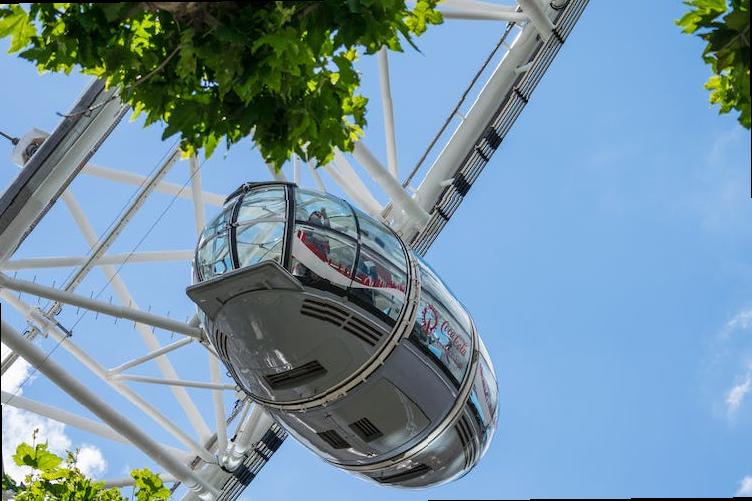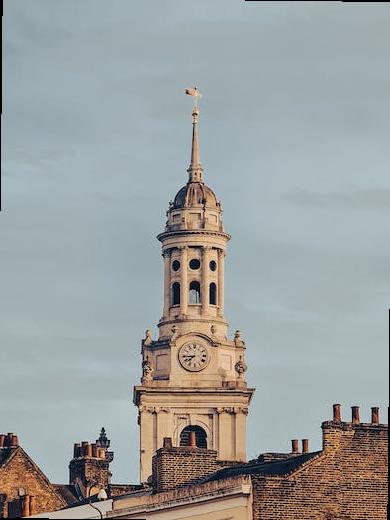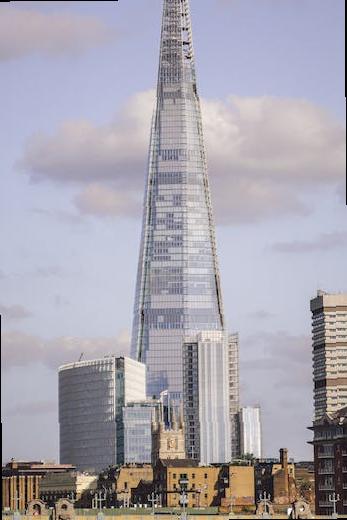Landmarks are an important aspect of any city. They help people navigate the city and give a sense of place and identity to its residents. In London, there are many landmarks that have become synonymous with the city and its various zones. These landmarks not only help us identify where we are in the city, but they also provide a sense of nostalgia and history.
For those who are new to London or just visiting, knowing which zone you are in can be a bit confusing. However, there are several landmarks that serve as markers for each zone. For example, if you are in Zone 1, you are likely to spot landmarks such as the London Eye, Big Ben, and Buckingham Palace. Similarly, Zone 2 is home to landmarks such as Tower Bridge, Canary Wharf, and the O2 Arena.
London’s landmarks are not just useful for navigation; they are also popular tourist attractions. People from all over the world come to see these landmarks and experience the history and culture that they represent. In short, landmarks are an essential part of London’s identity and serve a vital role in helping people find their way around the city.
North London
North London is one of the areas located in London. To know the London zone, we can check with the help of the London Underground map. North London is located in Zones 1-6, which are the central zones of London. The zones are numbered from 1 to 9, with Zone 1 being the most central and Zone 9 being the most outer part of London.
There are several ways to find out your specific zone in North London. One of the easiest ways is to check the postcode of the area you are in. This can be done by looking up the postcode on the Royal Mail website or using a postcode finder tool. Once you have the postcode, you can then check the London Underground map to see which zone it falls under.
Another way to find out your London zone is to use the Oyster card or contactless payment system on public transportation. By tapping in and out of stations with these cards or devices, the system will automatically calculate the fare based on the zone you are traveling in. This will show you which zones you are traveling in and make it easier to determine your specific London zone.
Overall, North London is a diverse and vibrant area that offers many attractions, including museums, galleries, parks, and other cultural experiences. With convenient access to different zones in London, North London is an excellent place to explore the city and all it has to offer.

Camden Market, Hampstead Heath
To know which London zone Camden Market and Hampstead Heath are in, you need to refer to the London Underground Map. Camden Market and Hampstead Heath are located on the North of London. You can find Camden Market on the map in Zone 2, while Hampstead Heath is in Zone 3.
Camden Market is a popular shopping destination amongst tourists and locals alike, known for its eclectic mix of stalls selling vintage clothing, trendy fashion, and homemade crafts. It’s easily accessible via the Northern Line, which runs through Zone 1 and Zone 2.
Hampstead Heath, on the other hand, is a large, sprawling parkland that boasts green spaces, scenic views, and diverse flora and fauna. It’s perfect for those looking to escape the hustle and bustle of the city and immerse themselves in nature. Two stations provide access to Hampstead Heath- Hampstead Station in Zone 2 and Golders Green Station in Zone 3.
Understanding the London Underground Map zones can help you plan your travels around the city and make sure you purchase the correct travelcard or Oyster card. It’s worth noting that the zone fares increase as you travel further out from Zone 1, so it’s essential to know your zone when budgeting for your trip.
East London
East London is an area of London located to the east of the city center. To determine your London zone, you need to refer to the London transport zone map. East London falls within zones 1-6, which means the zone you are in will depend on your specific location within the area.
For example, if you are in the City of London, an area in East London, you will be in zone 1. However, if you are in Stratford, another area in East London, you will be in zone 2. Other areas within East London, such as Canary Wharf, Mile End, and Bow, are also spread across different zones, so you need to check the zone map to determine your zone.
It is important to know your London zone as it can affect the price of your transportation. The higher the zone number, the higher the cost of travel. For example, a one-way trip within zone 1 costs £2.40 with an Oyster card, while a one-way trip from zone 1 to zone 6 costs £6.80 with an Oyster card.
In summary, East London falls within zones 1-6, and your specific London zone will depend on your location within the area.
South London
South London is one of the largest areas in the city of London. To know your London zone, you can use the Transport for London (TfL) Zone Map. Usually, South London is located in Zone 2 and 3. If you’re not sure, you can check the location of your destination on the zone map. The zone system is a crucial aspect of public transportation in London, and it determines the fare you will need to pay when using trains, buses or trams. The cost of transportation can vary according to a particular zone, but TfL offers daily and weekly travel cards that can help you save money.
Travel restrictions may change frequently due to the pandemic, so before planning your trip, it’s important to research and gather information such as do you need a passport to go to London. Currently, if you’re traveling from within the UK, you do not need a passport to enter London. However, if you’re coming from outside the UK, you may need a valid passport and a visa. In either case, it’s essential to check the latest travel restrictions and requirements before you book your tickets.
London Eye, Borough Market
To know the London zone for visiting attractions like London Eye and Borough Market, you need to look at the London Underground map. Both London Eye and Borough Market are situated in Zone 1.
Zone 1 is the most central zone of London, which includes major tourist attractions, entertainment venues, and business districts. It is also the most expensive zone for public transport in London. The other zones of London extend outward from Zone 1 and have fewer popular attractions, with lower transportation fares.

The London Underground map is color-coded by zones, with Zone 1 marked as dark yellow. If you are using a travel card or an Oyster card, you will be charged according to the zone you travel to or from. For example, if you want to travel to Borough Market from a hotel in Zone 2, you will need to purchase a travel card or Oyster card that covers Zones 1 and 2 or purchase a separate ticket for Zone 1.

In summary, London Eye and Borough Market are located in Zone 1, the most central and expensive zone of London. The London Underground map is color-coded by zones, and you will be charged according to the zone you travel to or from.
West London
West London is well known for its affluent neighbourhoods and trendy hotspots. If you are unsure about your London zone, you can identify it by checking your local train station. Most train stations in West London are in Zone 2, including popular destinations like Paddington, Hammersmith, and Ealing Broadway. However, some stations, such as Richmond and Kew Gardens, are in Zone 4. The amount that the London Marathon winner gets depends on their sponsorship deals. This prestigious event takes place in central London, where the zones are higher. West London is home to many iconic landmarks, such as the Westfield Shopping Centre, the Royal Albert Hall, and Portobello Road Market. Its multicultural neighbourhoods offer a wide variety of world-class restaurants and bars. West London is also a hub for prestigious universities, such as Imperial College London and the University of West London. The area is served by several airports, including London Heathrow and London City Airport. If you are visiting London for business or pleasure, West London provides easy access to the city centre via the underground or overground train services.
Notting Hill, Westfield London
Notting Hill is located in Zone 1 of London. Westfield London, on the other hand, is located in Zone 2. To determine the zone of a specific location in London, one can refer to the London Underground Map or use a postcode checker tool. The London Underground Map clearly indicates the different zones in London, with each zone marked by a specific color. The postcode checker tool can be accessed online and will provide the zone of the given postcode. The zones are primarily divided based on the distance from central London, with Zone 1 being the closest and Zone 9 being the farthest. The zones play an important role in determining the fares for public transportation in London. Travel within Zone 1 is typically more expensive compared to travel within the outer zones. Additionally, there are travel cards and season tickets available which provide unlimited travel within particular zones or across all zones, depending on the needs of the traveler.
Central London
Central London is located in the heart of the city and is known for its iconic tourist attractions such as the Tower of London, the London Eye, and Buckingham Palace. The easiest way to find out which London zone you are in is to check the Transport for London zone map. Central London is generally considered to be in Zones 1 and 2. These zones cover the central business district and most of the busy tourist areas.

If you are unsure which zone you are in, you can also check your Oyster card or contactless payment card to see which fares are being charged when you tap into a station. If you are visiting London as a tourist, it is recommended that you purchase an Oyster card to make travelling around the city more affordable.
Overall, Central London is a vibrant and bustling area of the city that is home to many of London’s most popular destinations. With easy access to public transport and a wealth of attractions to explore, it is the perfect starting point for any London adventure.

Buckingham Palace, British Museum
Buckingham Palace is situated in London Zone 1, which is in the heart of London. The palace is surrounded by popular attractions like St. James’s Park, The National Gallery, and Westminster Abbey. The palace is known for its changing of the guard ceremony, which takes place daily during the summer and on alternate days during the winter.
The British Museum is also located in London Zone 1. It is a world-famous museum featuring art, artifacts, and other historical objects that portray human history from its earliest days to modern times.
To find out your London zone, you can check the Transport for London (TfL) website, which shows a map of the different zones in London. You can also identify your zone by checking the color and number of the tube line you need to use to reach your destination.
Check out our article on the Comparison of police officer salaries in different London boroughs to find out how much does a police officer in London make.
Afterthought
In conclusion, understanding your London Zone is an essential aspect of getting around the city quickly and easily. The London public transport system is vast, and knowing your London zone will help you avoid confusion and save time. To determine your London Zone, you can use different resources such as the Transport for London zone map or the postcode search tool. These tools are easy to use and accurate, and will help you understand your London Zone.
It is important to note that your London Zone will have a huge impact on your travel costs. Generally, the more zones you travel through, the more you will pay. Therefore, it’s important to be mindful of this when travelling. Knowing your London Zone will also help you to plan your journeys more efficiently, as you can choose the appropriate routes and transportation tickets.
In summary, understanding your London Zone is vital for navigating the city with ease and for saving money on your travels. With the different resources available, it’s easy to determine your London Zone, and with this knowledge, you can plan your journeys more efficiently. So, the next time you explore London, make sure you know your London Zone, and enjoy your travels without stress.
